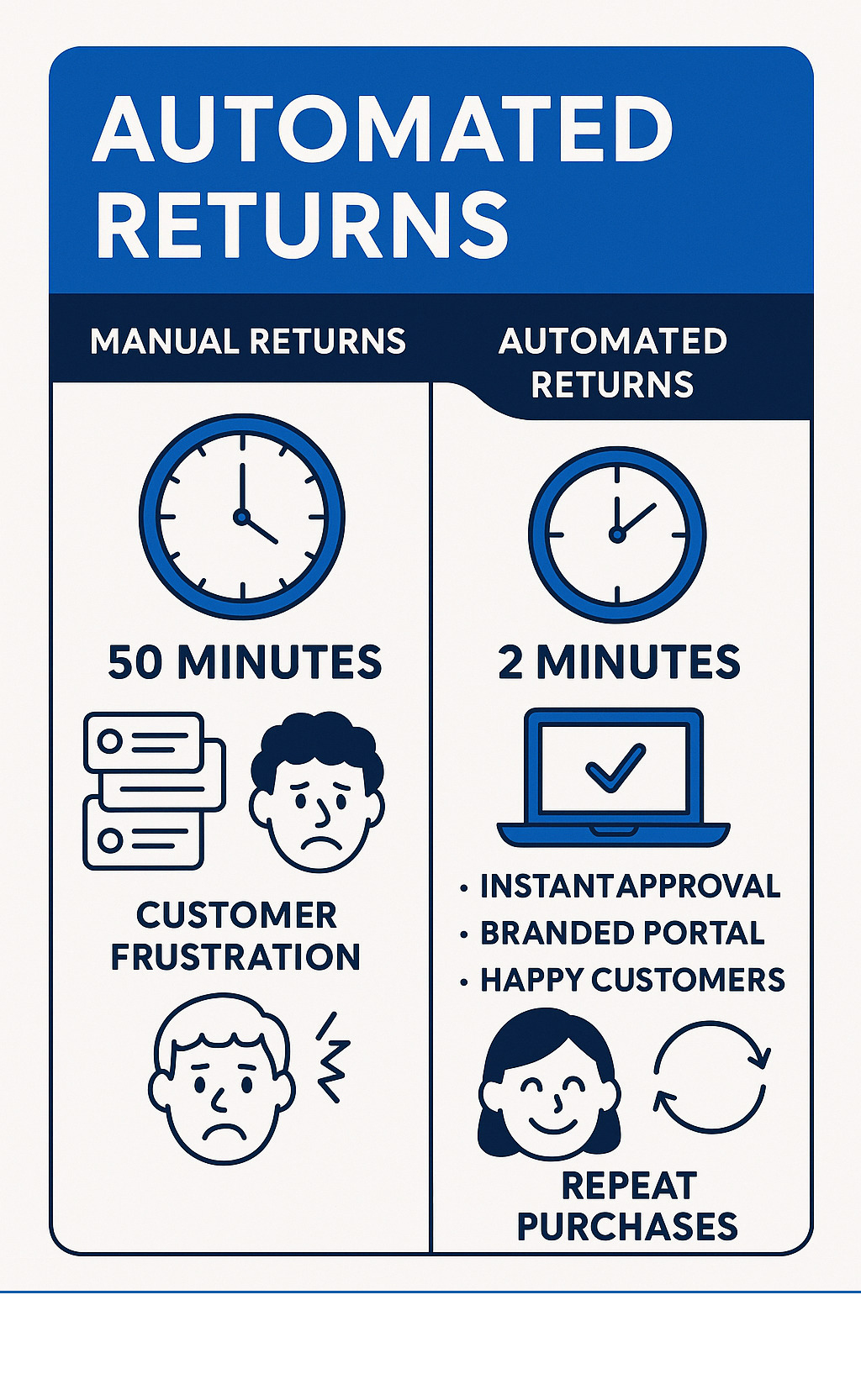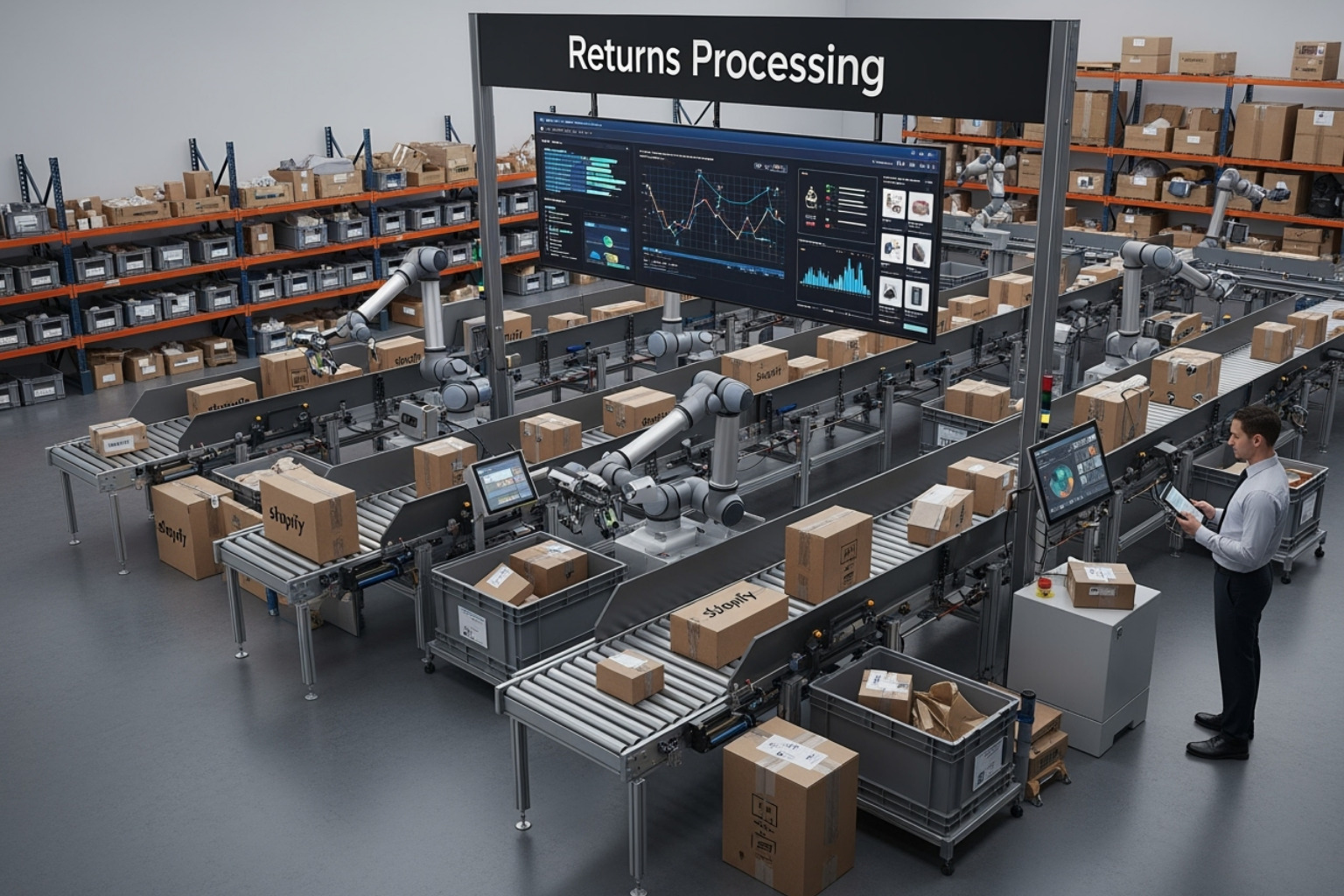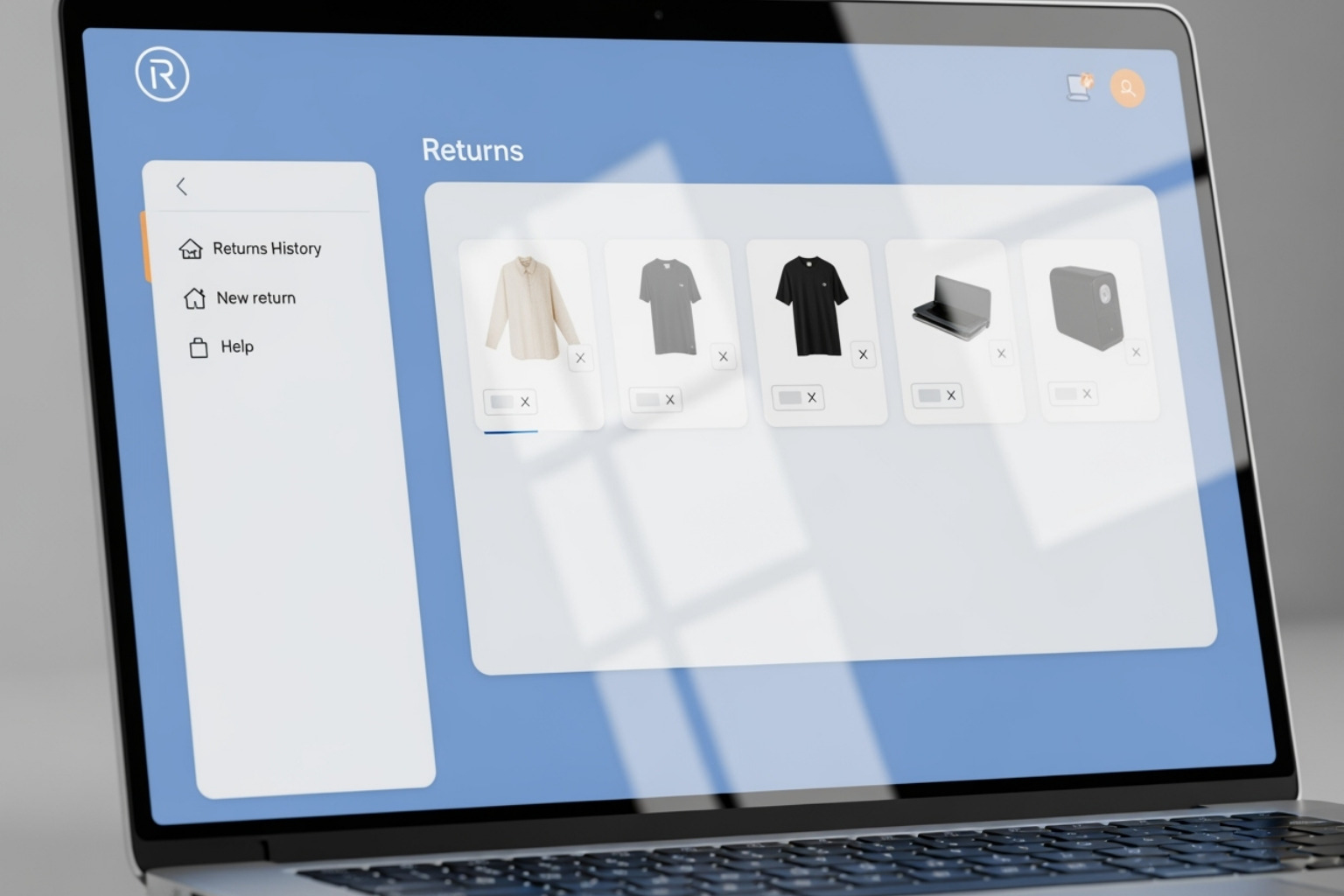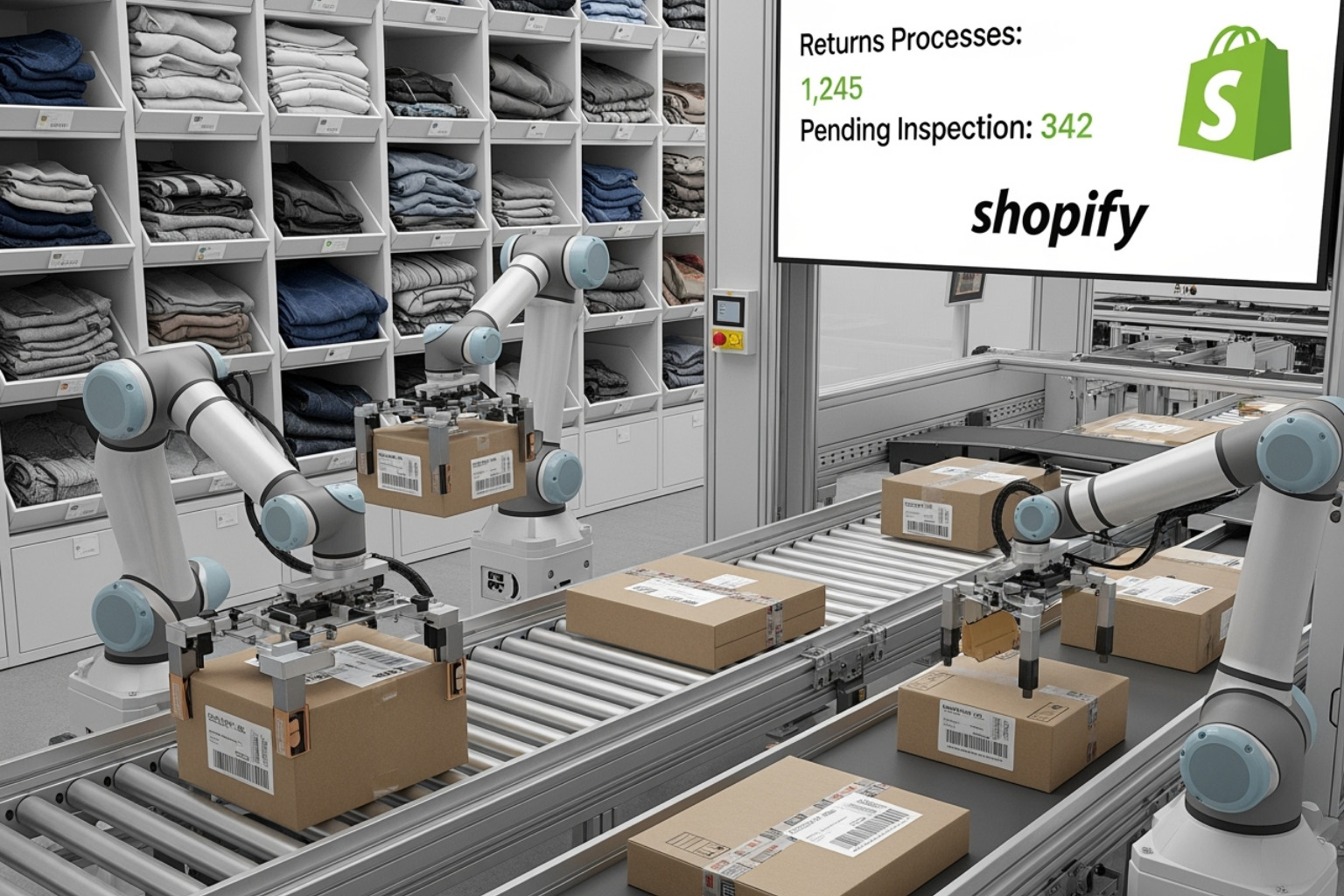Why Automated Returns Shopify is Essential for Growing Stores
Automated returns shopify solutions turn one of e-commerce's biggest pain points into a competitive advantage. Here's what you need to know:
Key Components of Shopify Returns Automation:
- Self-serve portals - Let customers initiate returns 24/7 without contacting support
- Smart rules - Automatically approve, reject, or flag returns based on your criteria
- Exchange incentives - Encourage customers to swap instead of refund
- Branded experience - Maintain your store's look and feel throughout the return process
- Analytics tracking - Monitor return patterns to improve products and policies
The numbers tell the story: 81% of shoppers prefer self-service options for resolving issues without contacting support teams. Yet most Shopify stores still handle returns manually, creating bottlenecks that frustrate customers and drain resources.
Manual return processing can take up to 50 minutes per complicated return. When customers have to email back and forth, wait for approval, and follow unclear instructions, they're less likely to shop with you again. Meanwhile, your team gets buried in repetitive tasks that automation can handle instantly.
The solution isn't just about saving time - it's about creating a returns experience that builds loyalty instead of destroying it. Smart automation can turn a potential negative into a positive touchpoint that encourages future purchases.
I'm Steve Pogson, and over two decades of scaling Shopify stores, I've seen how automated returns shopify systems can change customer relationships and operational efficiency. At First Pier, we've helped brands like Wyman's Blueberries and Hyperlite Mountain Gear streamline their returns to boost both customer satisfaction and bottom-line results.

Quick automated returns shopify terms:
Why Manual Returns Are Holding Your Store Back
Picture this: a customer wants to return a simple item, but your team spends the next 50 minutes juggling emails, checking policies, and walking through confusing steps. Meanwhile, that customer is getting more frustrated by the hour, and your support team is drowning in similar requests.
This scenario plays out thousands of times across Shopify stores every day, and it's quietly sabotaging growth in ways most merchants don't realize.
Operational costs spiral quickly when every return requires human involvement. Your team members become return processors instead of relationship builders. They're stuck doing repetitive tasks like generating RMA numbers, explaining shipping instructions, and manually checking order histories. That's valuable time that could be spent on proactive customer care or revenue-generating activities.
But the real damage goes deeper than just time costs. Inconsistent policy enforcement becomes inevitable when humans handle each case individually. One agent might approve a return that's slightly outside your window, while another strictly follows the rules. Customers notice these inconsistencies, and nothing erodes trust faster than feeling like you're playing favorites.
The negative customer experience hits hardest of all. We know that 81% of shoppers prefer self-service options for resolving their issues. When customers have to wait for email responses, explain their situation multiple times, or steer unclear return instructions, their satisfaction plummets. They came to your store expecting Amazon-level convenience, but instead they're stuck in an old-school customer service maze.
This frustration creates a high support ticket volume that feeds on itself. Customers email asking about return status updates. They follow up when return labels don't arrive. They complain when refunds take too long. Each interaction generates more tickets, pulling your team further away from strategic work that actually grows your business.
The final blow comes when you try to scale. Manual return processes simply can't keep pace with growth. Double your sales, and you'll likely double your returns. But you can't just double your support team without crushing your margins. This creates a bottleneck that actually limits how fast your business can grow.
Here's the encouraging part: automated returns shopify solutions solve all these problems at once. They cut operational costs, ensure consistent policy application, give customers the self-service experience they want, reduce support tickets, and scale effortlessly with your business growth.
The stores that figure this out first gain a real competitive advantage while their competitors are still stuck processing returns the hard way.
Getting Started with Automated Returns Shopify: Native vs. App Solutions
When you're ready to implement automated returns shopify, you have two main paths to choose from: using Shopify's built-in features or adding a dedicated third-party app. Both options are huge improvements over manual processing, but they serve different needs depending on your store's complexity and growth goals.

Activating Shopify's Built-in Self-Serve Returns
Shopify has made great strides in improving their native return features. The self-serve returns option is included with your Shopify plan and gives customers the ability to start return requests directly through your store without contacting support.
Getting started is pretty straightforward. Head to your Shopify admin, click Settings, then Customer accounts. Look for the Self-serve returns section and turn on the feature. Don't forget to save your changes.
Here's something important to know: Shopify's self-serve returns only work with their new customer accounts system, not the classic version. If you're still using the old system, you'll need to upgrade. The new accounts are actually better for customers anyway - they use email verification codes instead of passwords, making login much simpler.
Once you've activated the feature, you need to make it easy for customers to find. I recommend adding the customer accounts URL to your refund policy page - this is where customers naturally look for return information. You can add the customer accounts URL to your refund policy directly in your settings.
Many merchants also create a dedicated Returns page that explains their policy and includes a direct link to the portal. Adding the link to your footer menu is smart too, since that's where customers expect to find important store information.
When customers use the portal, they log in with their email and verification code, select their order, choose which items to return, pick a reason, and submit their request. The system can handle up to 250 line items per request, which covers most situations.
The native system does have some limitations though. Customers can only request refunds, not exchanges through Shopify's built-in portal. The return pages use your checkout's branding settings, which helps with consistency, but you can't customize them as much as you might want. You can personalize the email notifications under Settings > Notifications > Returns, which is a nice touch.
Setting Up Your Basic Return Rules
Beyond just letting customers submit requests, Shopify allows you to create basic rules that automate parts of your return policy. These rules help define when returns are allowed and how fees are handled.
The return window is probably the most important setting. You can choose preset options like 14, 30, or 90 days, set it to unlimited, or pick a custom timeframe. That these rules apply to orders placed after you set them up - they don't affect existing orders.
For return shipping costs, you have flexibility. You can offer free return shipping, charge a flat fee per return, or require customers to handle their own shipping. This choice often depends on your profit margins and customer expectations.
Restocking fees can be set as a percentage of the return value if you need to cover the cost of processing returned items. Customers will see this fee during the return process, so there are no surprises.
You can also mark certain products as final sale if you don't accept returns on them. This works great for custom items, heavily discounted products, or anything that can't be resold. You can apply this to entire collections or individual products.
To set up these rules, go to Settings > Policies in your Shopify admin, find the Return rules section, and click "Manage." After configuring everything, make sure to turn on the return rules. Shopify has a detailed guide on how to set up return rules if you need more help.
While these native features provide a solid foundation for automated returns shopify, they're pretty basic. You won't get complex automation workflows, advanced exchange options, or deep connections with your other business systems.
When to Choose a Dedicated App for Automated Returns Shopify
Many growing brands quickly outgrow Shopify's basic return features. That's when dedicated automated returns shopify apps become game-changers, offering much more flexibility and power.
Advanced rule logic is where apps really shine. Imagine setting up rules like "auto-approve returns under $50 if returned within 14 days, but flag for review if the customer has returned more than 3 items recently." Or "approve exchanges for store credit automatically, but require manager approval for refunds on expensive items." This level of control simply isn't possible with native features.
Branded self-service portals take the customer experience to the next level. While Shopify's pages use basic checkout branding, dedicated apps let you create fully customized, on-brand return experiences. Your customers get a consistent brand experience from purchase all the way through returns.
Smart exchange suggestions and store credit incentives are huge for keeping revenue in your store. Instead of just offering refunds, apps can suggest alternative products, different sizes or colors, or even offer bonus store credit for exchanges. I've seen this turn potential lost sales into happy, retained customers.
Automated label generation eliminates one of the biggest friction points. Apps connect directly with major carriers like UPS, FedEx, and USPS, automatically creating prepaid return labels and sending them to customers. No more back-and-forth emails or confusion about how to return items.
In-depth analytics help you understand your return patterns. You can see which products get returned most often, what reasons customers give, and even spot potential fraud patterns. This data is invaluable for improving your products and policies.
For larger operations, connection with existing systems is crucial. Apps often connect with your warehouse management, inventory systems, and customer service tools, keeping everything in sync automatically.
The post-purchase communication features keep customers informed at every step, reducing anxiety and cutting down on "where's my return?" support tickets.
Choosing a dedicated app is really about turning your returns process into a competitive advantage. It's the difference between just handling returns and using them to build stronger customer relationships while saving your team time and effort.
Best Practices for a Winning Returns Strategy
Setting up automated returns shopify is just the beginning. The real magic happens when you blend smart automation with customer-focused strategies that turn returns from a necessary evil into a competitive advantage.

Think about it this way: your returns process is often the last touchpoint customers have with your brand. Make it painful, and they'll remember that frustration. Make it smooth and helpful, and you've just created a loyal customer who'll tell their friends about your amazing service.
Crafting a Clear and Customer-Friendly Return Policy
Your return policy isn't just fine print - it's a sales tool. I've watched customers abandon carts because they couldn't quickly find or understand a store's return policy. Here's the sobering truth: 53% of shoppers avoid stores with unfavorable return policies.
The secret is making your policy feel like a friend explaining the rules, not a lawyer drafting a contract. Use simple language that your grandmother could understand. Instead of "Items must be returned in saleable condition within the specified timeframe," try "Please return items unworn with tags attached within 30 days."
Make your policy easy to find by putting it where customers naturally look. I recommend adding return policy links to your product pages, checkout flow, and definitely your footer. Some of my most successful clients even add a small "Easy Returns" badge near their add-to-cart buttons.
Be transparent about fees upfront. If customers pay for return shipping or you charge restocking fees, say so clearly. It might seem counterintuitive, but transparency actually builds trust. Customers are increasingly willing to pay for returns when they understand the value they're getting.
Clarity on your return window prevents confusion later. State exactly when the clock starts ticking - is it from the order date, ship date, or delivery date? "You have 30 days from when your package arrives" leaves no room for misunderstanding.
Turning Returns into Revenue with Exchanges and Store Credit
Here's where automated returns shopify systems really shine - they can turn a potential loss into a win. Instead of watching revenue walk out the door with every refund, smart merchants focus on recapturing sales through exchanges and store credit.
When a customer wants to return a medium shirt that didn't fit, your automated system can instantly suggest the same shirt in large or extra-large. Even better, it can recommend similar styles that might work better. This keeps the sale within your store and often leads to happier customers who get exactly what they wanted.
Store credit incentives work beautifully when done right. Offering a small bonus - say 10% extra value when choosing store credit over a refund - encourages customers to stick around. It's a win-win: they get more value, and you retain the revenue while building future sales.
This approach dramatically improves customer lifetime value. Every exchange or store credit transaction creates another opportunity to wow your customer. They're already involved with your brand, so make the most of that momentum. For more insights on this strategy, check out our guide on improving customer retention & loyalty.
Using Data from your Automated Returns Shopify System
The data flowing through your automated returns system is pure gold for improving your entire business. I always tell clients that returns data is like having customers give you a detailed report card on every product.
Identifying problem products becomes effortless when you can see return patterns clearly. If that bestselling jacket keeps coming back because it "runs small," you know to update the sizing guide or work with your supplier on fit consistency. When electronics get returned as "defective" repeatedly, it's time for a serious conversation with your manufacturer.
Understanding return reasons reveals bigger opportunities. Are customers frequently saying items "don't match the description"? Your product photos or copy might need work. Lots of "arrived damaged" returns? Time to review your packaging or shipping partners.
The ultimate goal is reducing overall return rates by fixing root causes. Better product descriptions, more accurate sizing charts, improved quality control - all these improvements come from listening to what your returns data tells you.
Smart systems also help with fraud prevention by flagging unusual patterns. Serial returners, suspicious timing, or other red flags get caught automatically, protecting your business from potential abuse.
This kind of intelligence turns returns from a cost center into a strategic advantage. For deeper insights into using this data effectively, explore our ecommerce data analytics solutions.
Frequently Asked Questions about Shopify Returns Automation
I get asked tons of questions about automated returns shopify from merchants who are ready to make the switch but want to know what they're getting into. Let me share the most common concerns I hear and give you straight answers.
How much does it cost to automate returns on Shopify?
The cost really depends on which route you take, and honestly, both options can work well depending on your needs.
Native features are your free starting point. Shopify's built-in self-serve returns and basic return rules come with your existing subscription - no extra charges. It's a solid way to test the waters and see how automation feels for your business.
App solutions work on tiered pricing. Most dedicated automated returns shopify apps use monthly subscription models with different feature levels. You might pay a base monthly fee that includes a certain number of returns, then additional per-return fees once you exceed that limit. Higher tiers usually open up advanced features like deeper connections, custom branding, or priority support.
I always tell merchants to think about the investment differently. Yes, there's a cost, but you're saving hours of manual work, keeping more revenue through exchanges, and creating happier customers who'll buy again. The math usually works out pretty quickly.
Can I automate international returns?
Absolutely! This is where dedicated apps really shine, especially if you're selling globally.
Carrier connections make it seamless. The better automated returns shopify apps connect with international shipping carriers, so they can generate the right labels and handle tracking across different countries. No more manually figuring out international shipping rates or customs forms.
Customs documentation gets handled automatically. Advanced solutions can generate the necessary customs paperwork, which is honestly a huge relief if you've ever tried to walk a customer through international return shipping manually.
Currency conversion works behind the scenes. Your customers can get refunds in their local currency while your system handles all the conversion calculations. It just works, which is exactly what you want.
For global brands, automating international returns isn't just nice to have - it's essential for providing consistent service no matter where your customers are located.
Will automating returns reduce my team's workload?
This is probably the question I'm most confident answering: yes, significantly!
Think about what your team does now. They're manually creating return authorization numbers, typing order updates, answering "where's my refund?" emails, and walking customers through return processes. Automated returns shopify systems handle all of that routine work.
Manual data entry disappears. The system creates RMAs, tracks everything, and updates order statuses without anyone touching a keyboard. Your team gets their time back immediately.
Support tickets drop dramatically. 81% of shoppers prefer self-service? When customers can handle returns themselves through a clear portal, they stop emailing your support team. The tickets that do come in are usually more complex issues that actually need human attention.
Processing happens faster. Automated approvals and instant label generation mean customers get what they need right away. Faster service means fewer follow-up questions and happier customers overall.
The best part? Your team can focus on the work that really matters - complex customer issues, building relationships, and growing the business instead of just reacting to routine requests all day.
To Sum Up: Make Returns Your Strength
I hope this guide has shown you why automated returns shopify isn't just another tech upgrade - it's a game-changer that can change your business. After working with hundreds of Shopify stores, I've seen how the right returns process can flip the script from dreaded cost center to competitive advantage.
Think about it: every return is an opportunity. When you make the process smooth and hassle-free, customers remember that. They tell their friends. They come back to shop again. That's the power of turning what could be a frustrating experience into something that actually builds loyalty.
Automated returns shopify solutions deliver real, measurable benefits that touch every part of your business. You'll save time by eliminating those endless email chains and manual data entry tasks that eat up your team's day. Your costs drop as operational overhead shrinks and you start recapturing revenue through smart exchanges instead of straight refunds.
But here's what really matters - your customers will love you for it. A seamless, transparent return experience improves customer loyalty in ways that surprise many store owners. When people can handle returns themselves, on their own schedule, without jumping through hoops, they feel respected and valued.
The data insights alone are worth the investment. You'll spot problem products before they hurt your reputation, understand why customers really return items, and make smarter decisions about everything from product descriptions to supplier relationships.
Making returns a strength isn't about accepting that people will return things - it's about recognizing that how you handle those moments defines your brand. It's a strategic business decision that pays dividends in customer satisfaction, team efficiency, and long-term growth.
At First Pier, we've helped brands change their post-purchase experience into something customers actually appreciate. We understand that every business is different, and there's no one-size-fits-all solution. Whether you're just starting with Shopify's native features or ready for a full-featured app, we can guide you to the right choice for your unique situation.
Ready to turn your returns process into a competitive advantage? Explore our Shopify Automation services and let's work together to make your returns as impressive as your products. Your customers - and your bottom line - will thank you.







